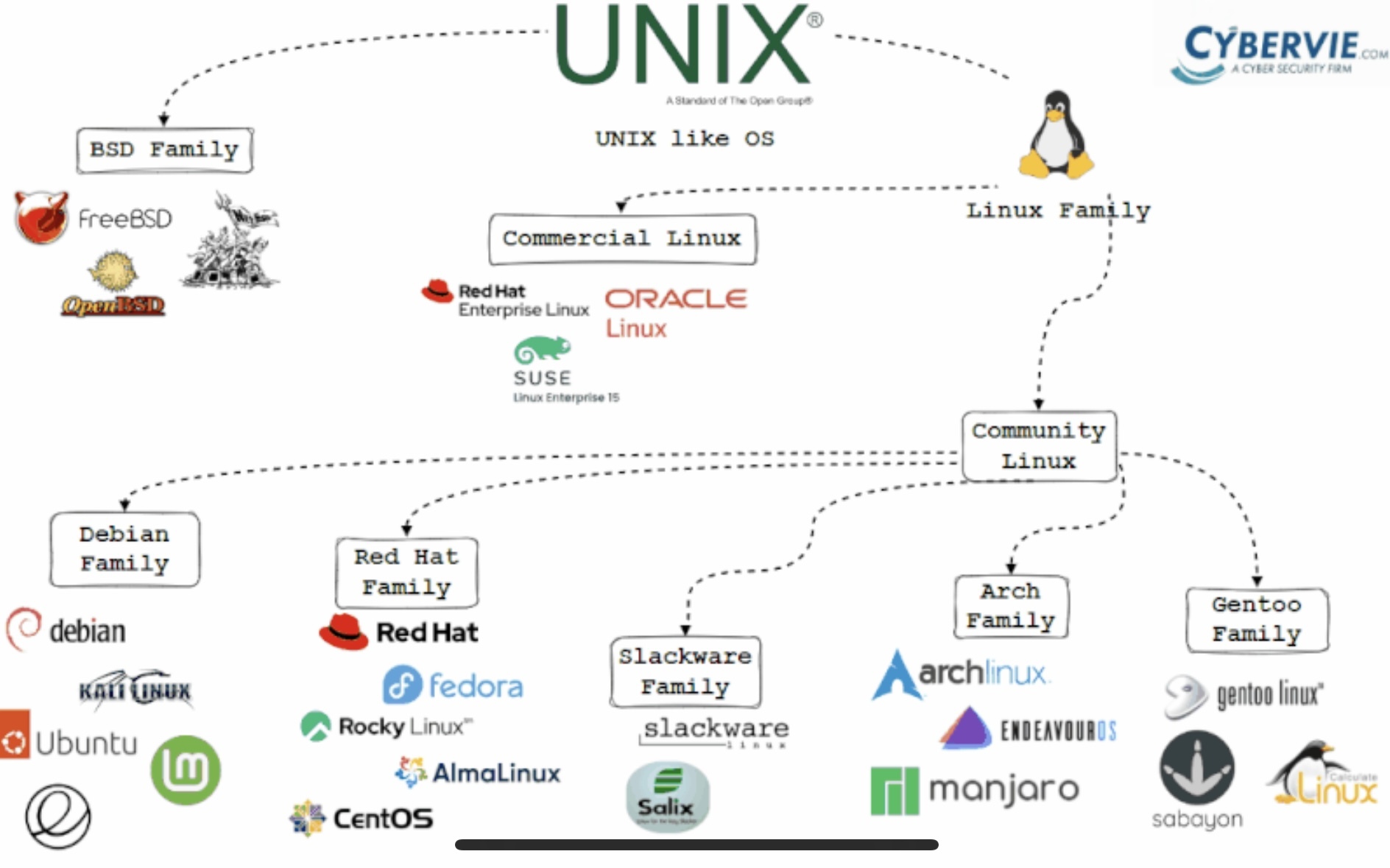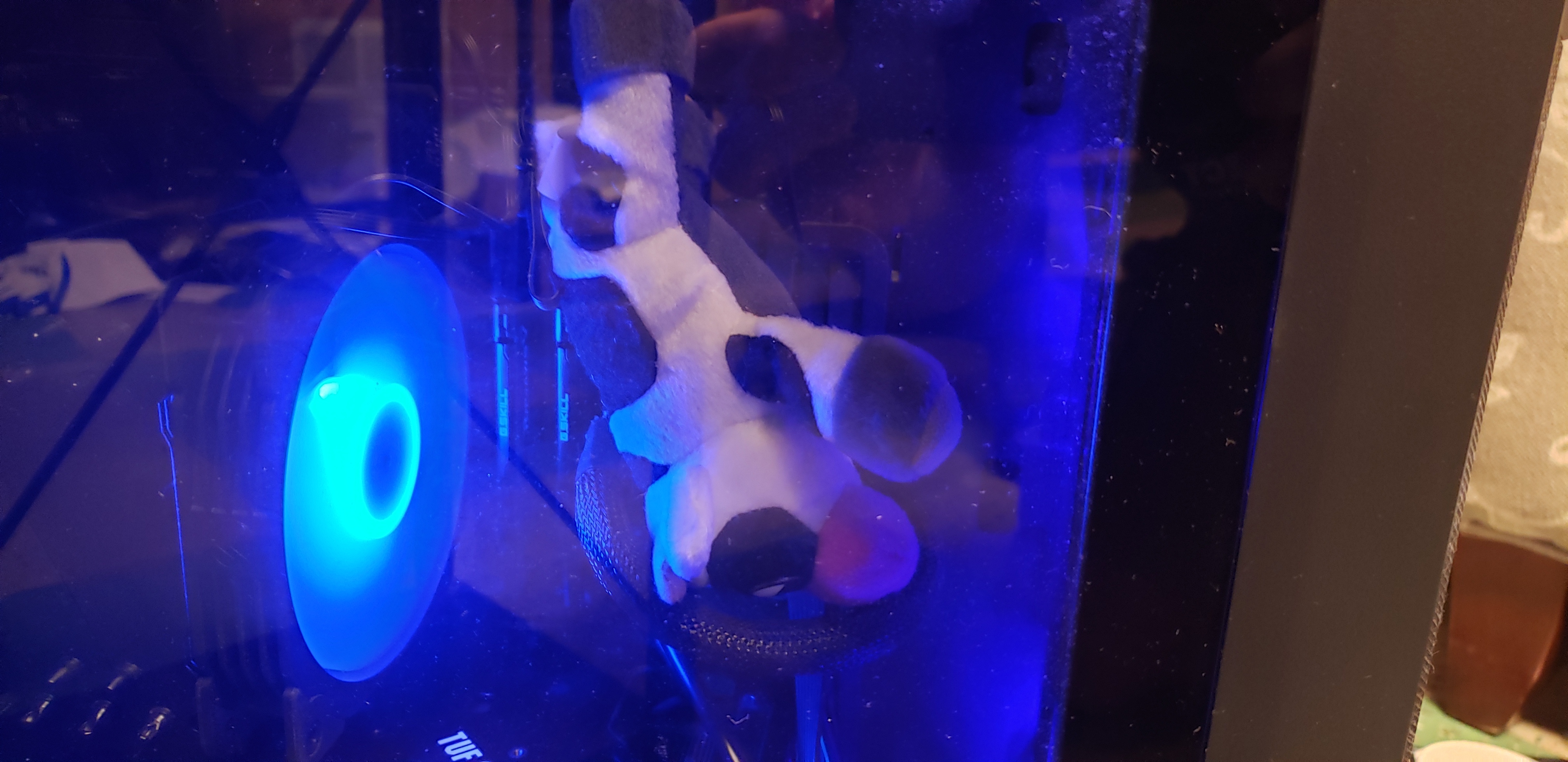Honestly, at this point I’m so done with window’s bullshit. Their operating system is damn near unusable. All the convenient stuff is hidden in weird places. The constant whining about having to buy their crap. Or worse trying to get me to use the horrible software that comes with the new versions.
My excuse used to be, but I can’t play games on it. This is no longer the case for the games I love. So Windows can suck it. At this point I’m switching away from a lot of stuff I used to use. (x-box became Steam-deck, twitter became blue-sky and reddit is becoming Lemmy) As a kind of computer illiterate person, this has been a worth while transition but a difficult one. Let’s just say I had to learn a lot of new stuff.
So I’m a total Linux newbie but thanks to my Steam deck I’ve become somewhat used to using it. Not like an expert, but I have run wine to create separate environments for running pokémon fangames. And have taken a look around the Linux environment. I like it and think I’ll be able to get used to it with practice. It reminds me weirdly of windows XP in how easily I can get everything to work the way I want. It takes a bit of doing and some research, but it works. Which is all I want in an operating system.
I am looking for tips as to where to start searching, because I am converting my windows computer to Linux. I just don’t know what version.
Any user experience is welcome, I have no idea where to begin. I mostly use the computer I’m installing this on as a glorified typewriter, that I play movies, music and retro-games on.
A user friendly version is preferred, I find it hard to parse out from the various versions I have seen so far how easy they actually are to use. Extra points if a large amount of the information has easy to find tutorials on the internet. I don’t always know where to start looking and as I learned while getting wine to work, some of the names/terms are completely different. (And kind of a lot at once if you are just getting started).
Any resources you might think are useful for a newbie are also highly appreciated.
tl;dr: I (a Linux noob) am looking for a recommendation for what version of Linux to use for my needs. And any tips tricks or other info that I might need to know before I switch. Because windows sucks.
I’m sorry if this has already been asked and answered. I did try to find an answer through searching, but as I already mentioned. My lack of terms and knowledge is holding me back.
Linux Mint. Easy to set up, reasonably easy to use, and used by enough people that a quick internet search should probably turn up results of people who have run into similar issues if you ever have a problem.
Also has an interface that clicks easier with people used to Windows.
deleted by creator
The best advice I can give you is to switch to Linux is don’t right away. Switch the applications you use to open source or Linux compatible alternatives that also run on windows. Then after you get used to those on windows then make the switch.
I would also recommend not dual booting at first since it’s too easy to jump ship at the slightest issue vs sticking with it to figure out the issue just like you would with a problem on windows. It’s a real thing I have experienced it in reverse as a long time Linux user that tried Windows 11 i kept jumping back to Linux every time I ran into issues that caused frustration.
This is some very solid advise.
I dual booted and I rarely ever used windows when i was starting, mostly because windows takes a while to reboot.
Are you me? Lol. Ever since I started bootinf Linux (through a standard speed pendrive, mind you) I barely boot into windows.
In fact, I’m pissed whenever I accidentally boot into windows because windows is too the automatic option when booting, haha. I foresee that changing very very soon.
Agreed, switch the applications first. I like using https://alternativeto.net/ to find replacements.
Here’s a nice pic that make you feel less “lost” about how some popular distributions relate to each other:

A bit more useful, puts the different parent distros to scale:

High-res source: https://en.wikipedia.org/wiki/List_of_Linux_distributions?wprov=sfla1
This picture definitely explains why I was so confused about all of the different versions. Dang, also fascinating to see that so many people put so much work into this operating system, making their own versions for their own needs. Thank you, this one also goes on the research pile.
Yeah, just a note, basically these Linux distros are the same at their “core”, but what differs among them is mostly about the software they have and the way they’re managed.
So you have distros that offer only open source software in their repository, some include proprietary drivers. Some distro families will have some differences in the path of certain folders, different families use different formats of their packages (which include the actual binary of the software together with the metadata about how to install them in the system), although a purely Linux binary should be executed in any Linux distro. Some offer more guidance during installation and setup, some offer a more “raw” experience that force you to chose every little detail, and so on.
Another difference is in their philosophy of how the packages and dependencies are made available. Distributions such Arch Linux and its derivatives always offer the latest versions of each package, reason why they’re called “rolling release”. Distributions such as Debian offer a specific version that’s “frozen” and tested thoroughly until a new version of Debian is released with more updated software.
Some say a rolling release distro is better for gamers because you always get the latest features and performance improvements, but they’re naturally less reliable than a stable distro.
So I’d say the important thing is to understand the trade-offs so that you can choose the best thing for you. And also there’s no downside of experimenting different distros in a virtual machine, for example.
Can you name some distros which are FOSS only and would whine if I were to attempt non-FOSS software installs? Debian now bundles non-free software by default (it’s an opt-out now instead of opt-in)
This is the best I could find: https://www.gnu.org/distros/free-distros.en.html
Thank you, this is going to make organising my research in preparation a lot easier. It also answered some questions I got by reading other peoples comments.
deleted by creator
A few people have been recommending Mint. I wasn’t aware it could possibly have hardware support issues, I’ll be sure to look into that beforehand. Thank you for the alternative recommendation. I’ll look into that as well.
You can always try the live USB without/before installing. It’s a great way to start getting comfortable or try out several different distros with minimal effort and risk.
Since you are already familiar with the Steam Deck, I would go with a distro (that’s Linux-speak for version) that uses KDE Plasma, as that’s the desktop environment used by Steam OS. My recommendation therefore is Bazzite or Aurora. Both OSs are developed by the same team using the same core technology. Bazzite is more “gamer focused” (a.k.a. they are pre-installing steam) while Aurora targets more of a developer audience. But I would argue that the differences are, at the end of the day, mainly cosmetic. Aurora is still pretty noob friendly and you could still develop on Bazzite.
Both systems are “Atomic” which basically means that a system update can’t screw up your system. And if you screw something up, then you can “rebase” the system which reinstalls the OS but keeps all your data and installed apps*. It uses flatpak with flathub as its appstore so you have the same apps available as on the Steam Deck.
Now for the downsides: Some apps are a bit harder to install. Mainly apps that need deeper system access such as vpn apps can take a couple more steps to install here than on other distros. There is also no live system. Many distros have a “live mode” where you can test the system before installing. This allows you to check if your hardware is supported. Aurora and bazzite don’t have that.
Lastly the userbase is growing, but other disros such as Mint are still more popular. You therefore might find less specific documentation and tutorials on the internet for it than with other options.
*Technically it’s more complicated than that, there are edgecases of apps that don’t survive a rebase, but don’t worry about that.
Second your Bazzite recommendation.
This user’s use case seems almost perfect for Bazzite.
deleted by creator
I second Linux mint. It’s my daily driver and I love it. I first switched my laptop which wasn’t much daily driver to mint and when I got used to it I switched my main desktop.
Sounds like Linux Mint would be a good start for you
I really like Debian. There’s a version of Linux Mint called Linux Mint Debian Edition (LMDE) that I recommend for people new to Linux. My wife has been using it for about 6 months.
The easiest way to install is by using the live image on a USB drive. I recommend installing Ventoy on the USB first if you like the idea of having a dedicated USB for boot images. Totally not necessary, but can be useful.
I much prefer LMDE over any Ubuntu-based distro. I don’t like the way Canonical has been going for a while now, and dealing with Ubuntu PPAs and other weird Ubuntu shit just doesn’t work with me anymore. Gimme a repo to put into /etc/apt/sources.list and leave it at that.
Why PPAs instead of repos? Why…
deleted by creator
afaik regular mint doesn’t have that clusterfuck either
Oh it does. I have it on an old MacBook. I’ve been meaning to replace it with LMDE.
I’m in a very similar situation like you are. I too have started to be annoyed with the Big Tech products and the Internet in general.
I have switched to Lemmy, shut down my gmail account and opened a Proton Mail, and switched from using Google search engine to Qwant.
I too have switched to Linux Mint, and I’m loving it. TBH my IT colleauges talked me into buying refurbished Thinkpad laptop and told me to install Linux Mint. Boy am I glad I did that.
The next step for me is switching to Fairphone :D
I never understood the whole fairphone thing. Theres way more phones on the planet than people. The most fair phone is just buying something 2nd hand for cheap. Save it from a landfill. I got a 150$ Pixel 6 a couple years ago, put graphene os on there, and i dont expect to get another phone until it literally stops working lol.
In my case the main reason is… removable battery.
This fair thing sounds like a gimmick to me too
It’s easy enough to replace an iPhone battery
That’s not what I meant by removable battery 😉
I can’t imagine just…shutting down my email. It’s 20 years old and is integrated into a lot of my life.
I suppose I should look into other options.
you can import all your mail into proton or another, and then set up autoforwarding in gmail until you update the email in the most important services.
you don’t have to delete the address, but deleting all mails there (after importing them to a new service and getting a full local backup) might be a good idea
MIne was from 2007. So not as old as yours. Yes, there are many things connected to it, but you can’t imagine what a feeling of relief that is.
Same. But I opened a Proton Mail and forwarded all my emails there. Now I am slowly (when bored) updating all my services to the new email. You can do it. Step by step over many years. But start now
Unfortunately my email is also linked to a lot of court and custody stuff… I’d have to submit all new paperwork to my lawyer and the courts. Oi…
Linux Mint is the obvious “newbie” choice, and not just because everyone says so.
Now, I’m no Linux expert, but Mint is great for the huge amount of tutorials availiable. The catch is: most of them aren’t aimed at Mint itself, but Ubuntu or Debian, from which it “inherits” a lot. So, if you have a problem and can’t find a fix for Mint specifically, chances are one aimed at Ubuntu (or even Debian) will work flawlessly.
Additionally, GenAI chatbots impress me with how helpful thay are. Just by asking them how to do stuff will teach you a lot.
I highly recommend you save the info which seemed most useful somewhere for future reference. In my experience I had to do a few dozen things repeatedly and ended up remembering them. They’re mostly simple commands like
apt install,apt update,apt upgrade,cdand my favourite<app_name &>which opens the app invoked without “hijacking” the terminal.As most in the Linux community say, some things are lightning-fast to do in the terminal once you know the proper incantation.
As others said, the Mint install is incredibly simple, and much faster than the Windows one. You don’t need a guide, just reading the on-screen prompts and instructions will guide you through it. During the install I highly recommend checking the “Install proprietary drivers” box because depending on your exact hardware, some things (especially Nvidia) may not play well without it.
You will be able to do almost everything without the terminal, although many tutorials do utilize it, so using it is pretty much inevitable at some point of your Linux journey.
Now, some hearsay: I’ve heard that Windows doesn’t play nice with dual boot (although I’ve never experienced it fist hand), so you should back up your files just in case.
But, before you do that: For starting, if you’ve got the time, I’d recommend getting an old machine to dip your toes into Linux on it first without fully committing. I’d recommend you do this even though you have the Steam Deck since there are some differences between SteamOS and Mint, so it wouldn’t hurt to try.
I honestly think mint is an outdated suggestion for beginners, I think immutability is extremely important for someone who is just starting out, as well as starting on KDE since it’s by far the most developed DE that isn’t gnome and their… design decisions are unfortunate for people coming from windows.
I don’t think we should be recommending mint to beginners anymore, if mint makes an immutable, up to date KDE distro, that’ll change, but until then, I think bazzite is objectively a better starting place for beginners.
The mere fact that it generates a new system for you on update and lets you switch between and rollback automatically is enough for me to say it’s better, but it also has more up to date software, and tons of guides (fedora is one of the most popular distros, and bazzite is essentially identical except with some QoL upgrades).
How common is the story of “I was new to linux and completely broke it”? that’s not a good user experience for someone who’s just starting, it’s intimidating, scary, and I just don’t think it’s the best in the modern era. There’s something to be said about learning from these mistakes, but bazzite essentially makes these mistakes impossible.
Furthermore because of the way bazzite works, package management is completely graphical and requires essentially no intervention on the users part, flathub and immutability pair excellently for this reason.
Cinnamon doesn’t and won’t support HDR, the security/performance improvements from wayland, mixed refresh rate displays, mixed DPI displays, fractional scaling, and many other things for a very very long time if at all. I don’t understand the usecase for cinnamon tbh, xfce is great if you need performance but don’t want to make major sacrifices, lmde is great if you need A LOT of performance, cinnamon isn’t particularly performant and just a strictly worse version of kde in my eyes from the perspective of a beginner, anyway.
and my favourite `` which opens the app invoked without “hijacking” the terminal.
lemmy sanitized it out, did you mean the ampersand?
Yup. For me it renders fine (Thunder)
Linux Mint DE will be the easiest transition.
Bro you’re messing with wine prefixes? You already know more than most and clearly have the motivation and ability to do what you want. You’ll go far, just google what you need when you need it like the rest of us :)
I’ve been daily driving linux since the late 90s and have no idea what wine prefixes are!
Think of them as a simplified mimic to the windows file system, they create this fake C: drive & user directory with basic windows paths (user, app data, program files, etc) an you can choose what firmware gets installed to prefixes (like .Net frameworks) an all this is how people can run .exe executables on Linux.
When you run
wine ./something.exea prefix is automatically created and the application uses that prefix to make it think it’s using the windows fs.
I was in your shoes last year, OP.
I first installed Mint (because everyone recommended it as the newbie distro) on a laptop that I took with me on summer vacation, to see if I can do some summer course work and finals on it. It worked flawlessly for that. Then I installed Steam and the paw patrol game for the kids, with controller support, and again everything worked flawlessly.
This basically gave me the confidence to just axe windows on my home desktop and fail horribly over and over again to get Arch working. Until I didn’t. I’m still Linux illiterate, but the Arch wiki, their IRC channel and duck.ai & asking every available LLM through it for consensus, helped a ton with resolving anything I have encountered. I’d probably go for something more stable though next time.
So yeah tl;dr try on old laptop first for a month, then switch your main PC.
You get my standard reply that I use zorin which is an ubuntu based distro that tries to give the look of feel of windows and has a lot of default installed things like wine/playonlinux, libreoffice, app for disc burning, rdp client, basically most everything I would want for day to day use. It is not necessarily the best gaming distro and its certainly not bleeding edge. Its a great install and get to doing things right away distro to me which is what I want.
I don’t mind if things aren’t the newest of the new. In my experience that usually means there are more tutorials and fewer bugs. A distro that feels like windows a bit is tempting as a newbie and might make my switch easier, thank you for that consideration. I also like the idea of getting to work right out of the box. I’m definitely adding Zorin to the research pile, thank you.
Go for a popular/“beginner” distro (basically mint or fedora or fedoraKDE, or Bazzite for gaming) so you can search up anything you need, and before you install anything test it all out with the live boot disk you created; keep backups and don’t be afraid to fuck up, at worst you reinstall and you can script much of the set up process; and do not be afraid of the terminal, learn its secrets, watch a “bash beginner” and “linux terminal beginner” video or a few on youtube and follow along like it’s a class, you’ll be fine.
That’s it, you’ll have specific questions later, but for now that’s all you need.













